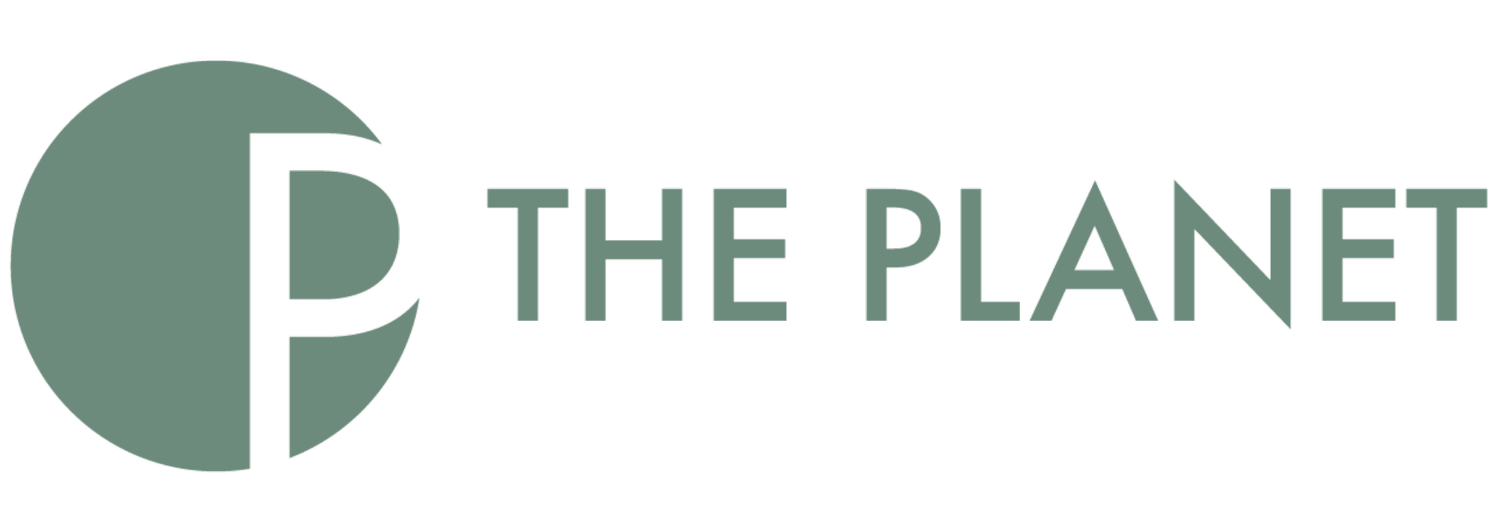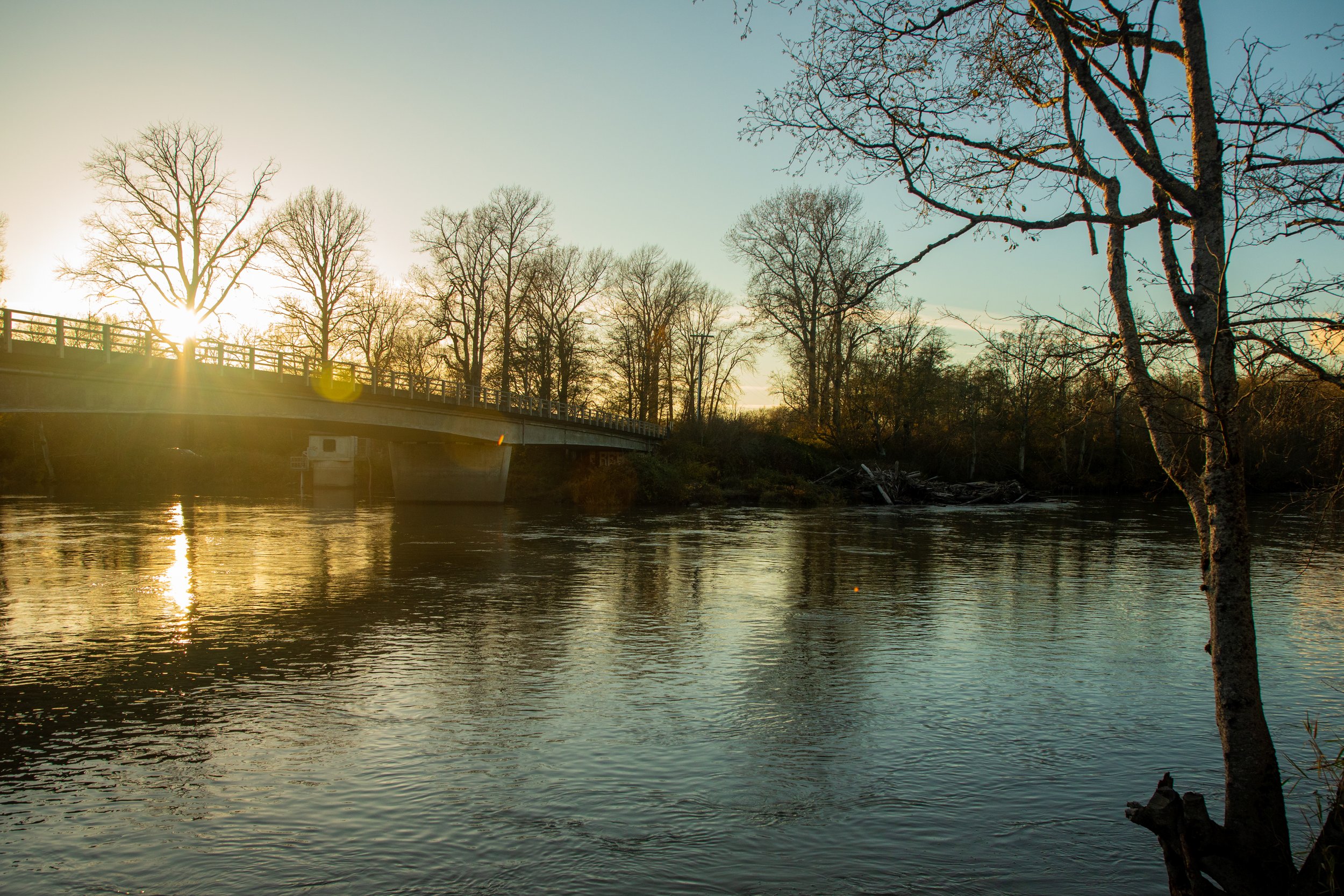Portage Pollution Creates Unsavory Shellfish
Fecal coliform bacterial pollutants entering the Nooksack River Watershed leaves the Lummi Nation with uncertain access to their shellfish harvesting sites.
A sunny afternoon near the mouth of the Nooksack River, on November 5, 2024. // Photo by Peyton Perdue
Story by Amanda Ferrell // Photo by Peyton Perdue
December 14, 2024
Along the rocky and muddy shores of Portage Bay, hundreds of acres of productive shellfish beds are left untouched, unharvested. Since the ‘90s, bacterial pollutants have been discharging into the bay from the Nooksack River, the largest freshwater source into the Bay, leaving the Lummi Nation with the repercussions.
This map showcases the extensive Nooksack watershed whose drainage effects Portage Bay, particularly through agricultural runoff. // Map by Isaac Becker
Over the last few decades, water quality in Portage Bay has fluctuated and cycled through phases of shellfish harvesting sites reopening, only to close again years later. Lummi Nation has inconsistent opportunities to harvest shellfish in their traditional areas, access that is promised in their treaty rights.
Water quality is beginning to drastically improve again. Local governments and communities are working together to identify sources of pollution, implement plans of action, enforce regulation and focus on education efforts concerning bacteria entering the bay, according to Ingrid Enschede, senior water quality planner at Whatcom County Public Works.
As of Sept. 17, 2024, the Washington State Department of Health, announced the large reopening of 360 acres of harvesting areas in Portage Bay for Lummi Nation. There are now 876 acres of shellfish areas open year-round. However, 440 acres are still only conditionally open, with seasonal closures in effect from Sept. 1 through Nov. 30.
“This latest opening of shellfish in Portage Bay is great, but also we want to acknowledge that the work’s not done. We always have to be working to improve water quality,” Enschede said.
Shellfish are filter feeders, separating small particles from the water, much like our water filter systems at home, according to shellfish biologist David Fyfe at the Northwest Indian Fisheries Commission. The small particles they filter can include algae, bacteria and viruses, all used for food by the shellfish. As shellfish filter and digest the small particles in the water, any consumed bacteria begins to concentrate in the tissues of the animal itself.
Water that is only slightly polluted can still cause high concentrations of bacteria in the shellfish tissue. While bacteria may be safe food for shellfish, as the levels in the water increase, the threat to human health and safety becomes larger.
Fecal coliform is the bacterial indicator used to monitor the presence of bacteria in the water. High counts of fecal coliform represent a higher risk of harm to human health when consuming shellfish. Risks of deadly diseases such as E.coli increase with higher levels of fecal coliform.
According to Whatcom County Public Works, the current main concerns surrounding bacterial pollutants entering the watershed are non-point source pollutants – pollution where the origin is difficult to track to a single source – from the Nooksack River watershed. These include human sewage, agricultural runoff, pet poop, local wildlife and stormwater runoff.
“We're dealing with an extremely difficult beast, which is non-point source pollution, because it comes from everything,” Enschede said.
The state health department is responsible for monitoring fecal coliform in the water, using strict national water quality standards to decide if and when shellfish beds need to close. Water quality levels are classified by the state egulators into approved, conditionally approved, restricted, and prohibited areas. Conditionally approved areas may have harvesting limits, without being fully closed year-round.
Portage Bay is currently a conditionally approved area. Predictable increases in bacterial pollutants entering the Bay every fall cause the water quality to decrease. After a summer of dry weather, bacteria builds up. As heavy fall rains come, they flush all of the built up bacteria into the Nooksack River Watershed, discharging into Portage Bay.
Downgrades to shellfish harvesting area statuses can happen quickly if there are large flushes of water carrying high amounts of bacteria into the Bay. However, the timeline for a closed area transitioning into conditionally approved or fully open can be a slow process.
“We have to look at the last 30 samples at each station that goes back around two and a half years,” Scott Chernoff, who supervises shellfish growing areas for the department of health, said. “Which means that if we get high fecal coliform samples, they're going to persist in the data set for around two and a half years.”
Chernoff gives credit for the recent improvements in water quality to Whatcom County and Lummi Natural Resources for the work they do, while acknowledging that this is Lummi’s water.
“They're the people on the ground that are getting the work done, to allow us to make these changes,” Chernoff said.
The water quality of the Nooksack River Watershed is a concern for all species. A local fisherman seen in the river on November 5, 2024. // Photo by Peyton Perdue
The current seasonal closures in Portage Bay used to be in place from Sept. 1 to Dec. 30. As of August 2024, the department of healthwas able to remove the month of December from the seasonal closure, after Lummi conducted extensive water quality sampling for over two years.
In 1997, 60 acres of Lummi shellfish sites were voluntarily closed due to high fecal coliform, followed by 90 more acres in 1999. During the initial closures, the Lummi Nation lost an estimated $850 thousand per year, according to the Portage Bay Shellfish Protection District Recovery Plan 2014.
Following the initial closures, Whatcom County created plan to identify and correct sources of pollution. Water samples displayed high concentrations of pollutants in the Nooksack River Watershed, discharging into Portage Bay.
According to the Portage Bay Initial Closure Response Strategy, the four key sources of bacterial pollution reported in August 1997 were agricultural dairy waste management, city sewage treatment plants, failing on-site septic systems and stormwater runoff.
The county addressed repairs to septic and sewer systems, and farmers learned new best practices concerning manure application and dairy farming practices, with new regulations in place to control the animal manure entering the river.
Changes in manure applications and livestock management practices led to significant improvements in water quality impacts from Whatcom County dairy farms.
Fred Likkel of Whatcom Family Farmers recounts how farmers stepped up in the ‘90s, acknowledging the need to take action and learn more about the pollutant issues impacting the watershed and Portage Bay shellfish harvesting areas.
“If our community values farming and values salmon and values shellfish, we have to make sure that as we grow, we grow carefully,” Likkel said.
In the mid-2000s, water quality samples were showing sustained improvements. In 2003, shellfish harvesting areas in Portage Bay began to reopen, with the rest of the closed beds reopening in 2006. After many years of closures, the Lummi were able to return to their traditional shellfish harvesting sites.
Fast forward to 2014, and Lummi shellfish areas were once again closed due to bacterial pollutants in the water.
After previously addressing large identifiable point source pollution issues, the focus shifted to looking at sources of bacterial pollution across the entire landscape of the Nooksack River watershed.
“We try to stress that there's no one group that's all at fault, and there's no one group that has to do all the work to clean it up,” Enschede said.
Whatcom County offers resources including free technical assistance, free advice, rebates and financial assistance programs to cover the costs of necessary changes. After a serious water quality problem has been identified, and the above programs, education, and assistance are offered, regulatory backstops may be used to enforce changes if nothing is done.
Lummi Nation is at the mouth of the Nooksack River Watershed, faced with the impacts of bacteria and other pollutants entering the water upriver.
According to the Lummi Nation Natural Resources website, “The quality of the resources associated with the estuaries and tidelands affects the political integrity, economic security, health, and welfare of the Lummi Nation.”



